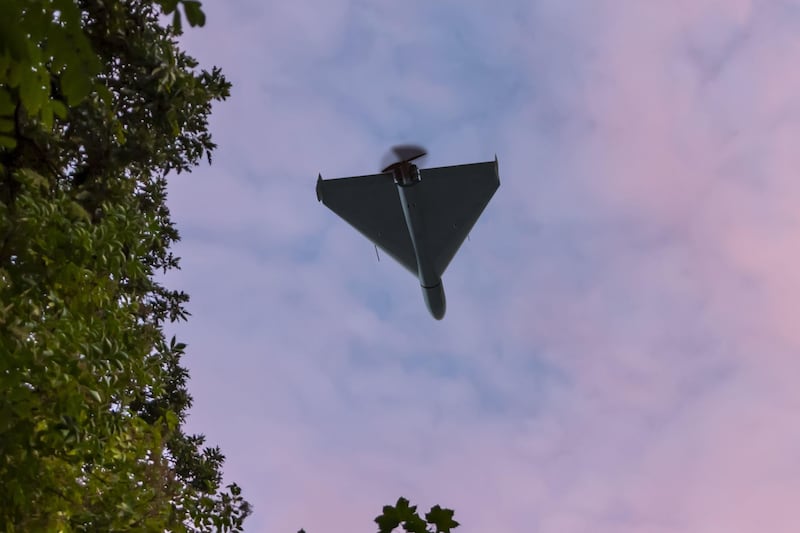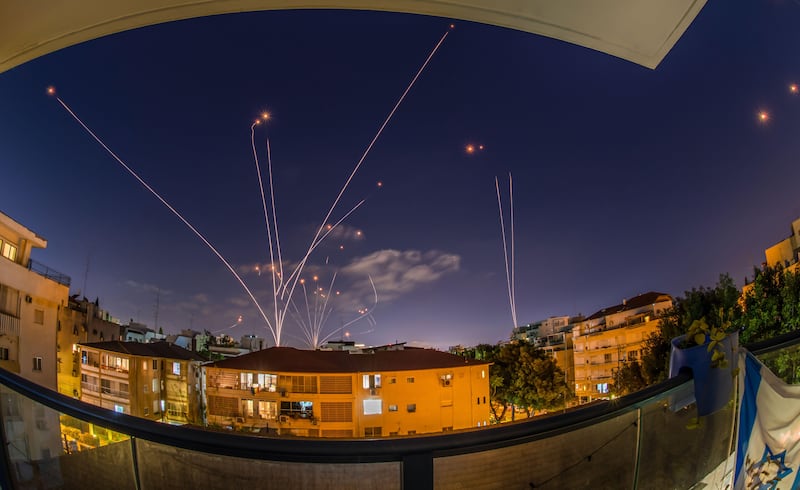Israel has withstood an aerial bombardment by Iran relatively unscathed on Saturday night and early Sunday morning, according to reports.
The New York Times quoted two Israeli officials who say that, in total, Iran launched 185 drones, 36 cruise missiles and 110 surface-to-surface missiles. Most of the launches were from Iran, though a small portion came from Iraq and Yemen, the officials reportedly said.
The Israeli military said some damage was done to infrastructure at the Nevatim airbase in the south of the country, while a girl was injured by shrapnel, also in the south. Other than disruption to civilian life, including air raid protocols and the closing of the airport, little other damage has been reported.
Here are some of the factors in how Israel navigated the attack.
READ MORE
Advance knowledge
The news of the drone attacks on Israel broke to the world via its military spokesman, Rear Admiral Daniel Hagari, who said soon after 8pm that the barrage was under way and that it would take a number of hours to arrive in the country.
Iran does not share a border with Israel: anything launched from Iranian territory had to travel at least 500km to reach its target, through the airspace of at least two other countries. Possible paths included those through Iraq and Jordan, Iraq and Syria, or Iraq, Saudi Arabia – which is very hostile to Iran and its proxies – and Jordan.
While other missiles were also deployed, their launch came later after the drones were on their way.
Slow drones
The weapons which made up the much of the attack were Shahed drones, which are produced in Iran but are slow and noisy by the standards of modern weaponry.
The drones are relatively cheap – reportedly around $20,000 compared to costs of more than $1 million for many missile interceptors – and have been used widely by Iranian allies in recent years, most notably by Russia in Ukraine and by Yemen’s Houthis in attacks on shipping and Saudi Arabia.
[ World leaders condemn Iran’s drone, missile attack on IsraelOpens in new window ]

They have proven tactically useful for Iranian proxies engaged in asymmetric warfare, but are more limited in an attack on a technologically advanced state which had hours of notice.
In November a record 75 targeted Kyiv, and 71 were shot down, Ukrainian officials said. Israel’s air defence systems are more advanced, better supplied and more concentrated in its smaller territory than those of Ukraine, so it was in a good position to parry the vast majority of the drones.
However, Iran also launched a smaller number of ballistic missiles and cruise missiles at Israel, varying the challenge Israel faced.
Strong defences

Israel’s air defence system is the Iron Dome, which became operational in 2011. However, the Iron Dome is targeted towards smaller rocket fire of the sort originating from Hamas fighters in Gaza or Hizbullah in southern Lebanon, and it was not the primary form of defence on Saturday night.
The longer-range missile defence systems used included:
- The Arrow: This system developed with the US is designed to intercept long-range missiles, including the types of ballistic missiles Iran said it launched on Saturday. The Arrow, which operates outside the atmosphere, has been used in the current war to intercept long-range missiles launched by Houthi militants in Yemen.
- David’s Sling: Also developed with the US, the David’s Sling is meant to intercept medium-range missiles, such as those possessed by Hizbullah in Lebanon.
- Patriot: This American-made system is the oldest member of Israel’s missile-defence system – used during the First Gulf War in 1991 to intercept Scud missiles fired by Iraq’s leader at the time, Saddam Hussein. The Patriot is now used to shoot down aircraft, including drones.
Israel also scrambled fighter jets capable of shooting down missiles within its airspace before the attack.
Foreign assistance

The distance between Iran and Israel also allowed for the interception of missiles by air defence systems and air forces operating in the states between the two borders.
The United Kingdom’s Royal Air Force replaced the United States in a counter-terrorism air mission on the Syrian-Iraqi border on Saturday night, allowing the US to redeploy to intercept missiles in the area. The UK also said it would shoot down missiles within its mission areas.
The US military shot down dozens of Iranian missiles bound for Israel, as well as knocking down drones, three US officials told the Reuters news agency. Two of the officials, who spoke on condition of anonymity, said some of the missiles were shot down by the US navy.
Israel’s chief military spokesman said on Sunday that France was among the countries involved in defending Israel against Iran’s overnight attack. “France has very good technology, jets, radar – and I know they were contributing in patrolling airspace,” he said, adding that he did not have exact details on whether French jets had shot down any of the missiles launched by Iran.
Jordan, a small Arab kingdom which makes up the bulk of Israel’s eastern border, also shot down dozens of drones using its own air force, Reuters reported. Iran threatened Jordan with recriminations if it interfered with the barrage. – Additional reporting by AP and Guardian
- Sign up for push alerts and have the best news, analysis and comment delivered directly to your phone
- Find The Irish Times on WhatsApp and stay up to date
- Listen to our Inside Politics podcast for the best political chat and analysis











